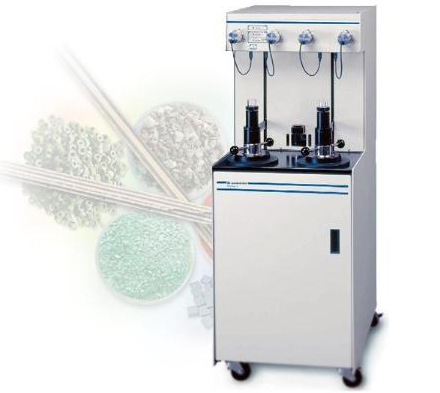
介绍:AutoPore IV系列压汞仪使用汞侵入法来测定总孔体积、孔径分布、孔隙率、密度和传输性。内置强大的数据处理和报告程序包,快速升压、灵活、可控的真空系统,和高性能的低/高压系统。
技术特点:孔径范围:0.003到 1000 nm;可选择2个低压站和1个高压站或者4个低压站和2个高压站,以满足多种样品的检测;高级别安全防护,即使在高压和有毒的物质汞环境下仍可放心使用;可选择压力33000 psi或者压力60000 psi型号;低噪音,高压系统;增强的数据处理包,包括弯曲度、渗透性、压缩系数、孔喉比、分形维数,Mayer-Stowe粒径分布等;可进行扫描模式或速率平衡模式操作;收集极高分辨率的数据;进汞或退汞体积精度优于0.1μL;封闭式汞系统-用汞量低。
Introduction:Micromeritics' AutoPore IV 9500 characterizes a material’s porosity by applying various levels of pressure to a sample immersed in mercury. The pressure required to intrude mercury into the sample’s pores is inversely proportional to the size of the pores. This is called mercury porosimetry, or often, “mercury intrusion.” The AutoPore IV series provides high-quality analysis data and comes with enhanced data reduction and reporting packages, faster pressure ramp rates, a more flexible and controllable vacuum system, and a redesign of both the low-and high-pressure generation systems.
Features:
The term "porosimetry" is often used to include the measurements of pore size, volume, distribution, density, and other porosity-related characteristics of a material. Porosity is especially important in understanding the formation, structure, and potential use of many substances. The porosity of a material affects its physical properties and, subsequently, its behavior in its surrounding environment. The adsorption and permeability, strength, density, and other factors influenced by a substance’s porosity determine the manner and fashion in which it can be appropriately used.
The mercury porosimetry analysis technique is based on the intrusion of mercury into a porous structure under stringently controlled pressures. Besides offering speed, accuracy, and a wide measurement range, mercury porosimetry permits you to calculate numerous sample properties such as pore size distributions, total pore volume, total pore surface area, median pore diameter, and sample densities (bulk and skeletal).
The AutoPore IV Series Mercury Porosimeters can determine a broader pore size distribution (0.003 to 1100 micrometers) more quickly and accurately than other methods. These instruments are enhanced with features that enable them to more accurately gather the data needed to characterize the porous structure of solid materials. They also offer new data reduction and reporting choices that provide more information about pore geometry and the fluid transport characteristics of the material.